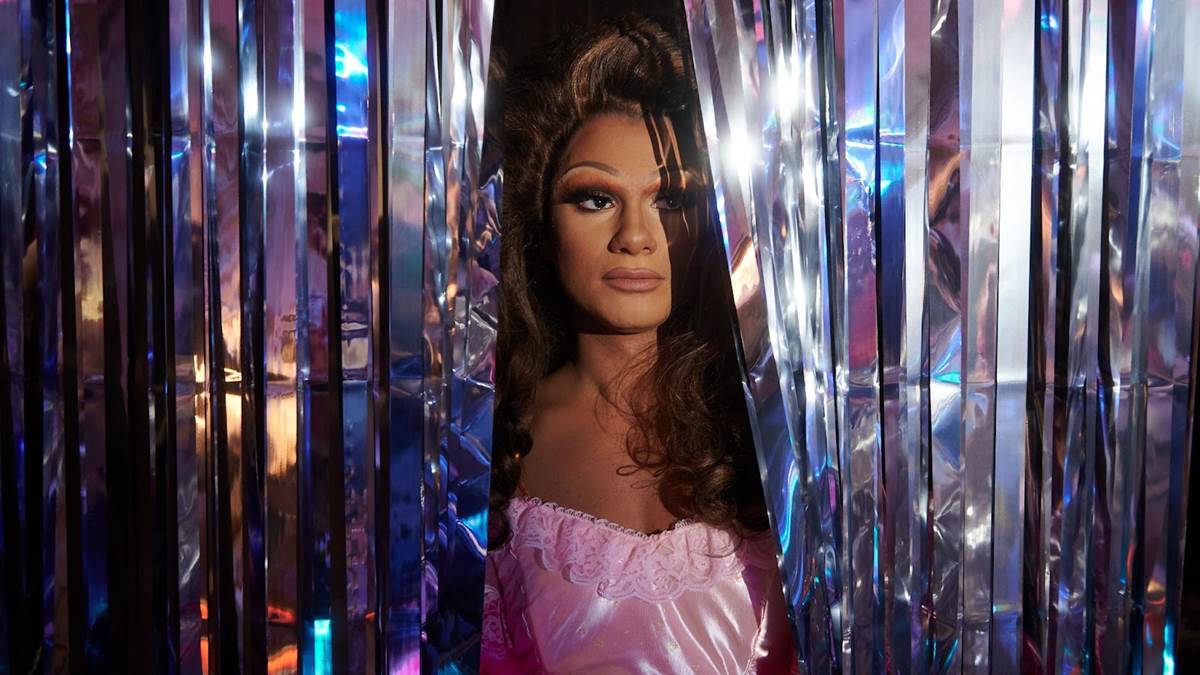Filmmaker Amrou Al-Kathi’s interests intersect on screen in Layla, which helped open this season’s Sundance Film Festival. Writer/director Amrou Al-Kathi is a British-Iraqi drag performer who seemingly channels their own experiences into the film. It’s a film about the intersection of religion, culture, gender identity, and passion.
Layla (Bilal Hasna, Extraordinary) seemingly lives a sparkly existence as a drag queen with their queer chosen family, who are trying to save their nightclub, Feathers. While working a gig, Layla meets Max (Louis Greatorex, The Bay), and the two spark an unexpected relationship. But as Max tries to love Layla for who they are, their complicated double life begins to untangle.
Compared to more mainstream films about drag performers (The Birdcage and To Wong Foo, Thanks for Everything! Julie Newmar), Layla carries a few overlapping themes about self-acceptance and not compromising who you are. But unlike those 1990s classics, Layla adds a more contemporary layer by having its titular character be non-binary. This adds a bit of narrative poetry to the piece because, as Layla points out to Max, they exist in a constant state of in-between.
Layla’s chosen family believes Layla was kicked to the curb by their blood relatives. And the group is not exactly thrilled when Layla brings Max home, a white cisgender gay man who is seemingly not queer enough to be worthy of their inner circle. In truth, Layla’s biological sister Fatima (Sarah Agha) is desperately trying to reconnect, and Layla can’t ignore her forever. So, as Layla embarks on a serious relationship with Max, all the threads woven around them start to pull apart.
The film delights in its use of color, particularly in Layla’s outfits, which are like a yassified version of creations from Romy and Michele's High School Reunion. Scenes set in Feathers feel dreamlike, particularly in the way they’re lit, which creates a striking contrast to heteronormative spaces, which are almost devoid of color. It helps establish Layla’s discomfort when not in their element. The drag performances are also a lot of fun, set to bops like Agnes’ “Release Me,” MARINA’s “Primadonna,” and Perfume Genius’ “Queen.”
Layla is a well-intentioned effort, filled with themes from Amrou Al-Kathi’s memoir Life as a Unicorn: A Journey From Shame to Pride and Everything In Between. But through Layla’s disinterest in explaining anything to Max, viewers aren’t given the contex neededt to understand them fully. While the film delivers the character to a somewhat better place than we found them, the journey doesn’t feel transformative enough to yield a meaningful payoff.
I give Layla 3 out of 5 stars.
(Please note this article contains affiliate links. Your purchase will support LaughingPlace by providing us a small commission, but will not affect your pricing or user experience. Thank you.)

